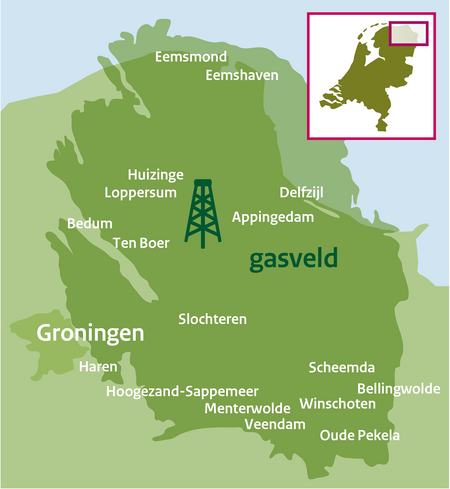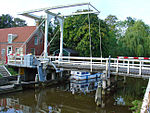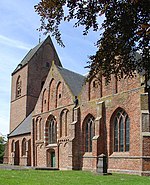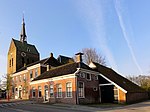Groningen gas field

The Groningen gas field is a natural gas field in Groningen province in the northeastern part of the Netherlands. With an estimated 2,740 billion cubic metres of recoverable natural gas it is the largest natural gas field in Europe and one of the largest in the world. The gas field was discovered in 1959 near Slochteren. The subsequent extraction of the natural gas became central to the energy supply in the Netherlands. Virtually all of the Netherlands was connected to Groningen gas in the following years. Revenue from natural gas production became important in the post-war development and construction of the Dutch welfare state. As of 2013, 2,057 billion cubic metres of natural gas had been extracted from the field.Gas extraction resulted in subsidence above the field. From 1991, this was also accompanied by earthquakes. This led to damage to houses and unrest among residents. It was decided to phase out gas extraction from 2014 onwards. The reinforcement operation and damage settlement as a result of the earthquakes are progressing slowly. The National Ombudsman called this a "national crisis" in 2021. In June 2023, the government announced that extraction from the field would cease by 1 October 2023. Approximately 450 billion cubic metres of gas are thought to remain in the field as of 2023.
Excerpt from the Wikipedia article Groningen gas field (License: CC BY-SA 3.0, Authors, Images).Groningen gas field
Meedenweg, Eemsdelta
Geographical coordinates (GPS) Address Nearby Places Show on map
Geographical coordinates (GPS)
| Latitude | Longitude |
|---|---|
| N 53.3 ° | E 6.8 ° |
Address
Meedenweg
Meedenweg
9917 TA Eemsdelta
Groningen, Netherlands
Open on Google Maps











